UPSC Daily Current Affairs: 29th March 2025 | Current Affairs & Hindu Analysis: Daily, Weekly & Monthly PDF Download
GS3/Economy
India's Cotton Crisis - From Self-Sufficiency to Import Dependence
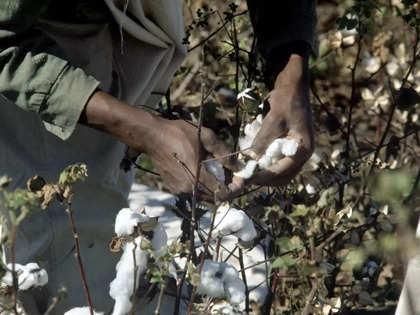 Why in News?
Why in News?
India, once a prominent producer and exporter of cotton, is currently experiencing a significant decline in its cotton production, leading to a net dependence on imports. This crisis is primarily attributed to policy stagnation and restrictions on genetically modified (GM) crops rather than external factors.
- India's cotton production has decreased sharply, transforming from a net exporter to a net importer.
- Policy restrictions on GM crops and regulatory hurdles are major contributors to this decline.
- The cotton crisis has economic implications, affecting trade and farmer livelihoods.
Additional Details
- Technological Advancements: India's rise as a cotton producer was facilitated by hybrid technology and the introduction of GM Bt cotton, which improved yields significantly. For example, in 2013-14, Bt cotton adoption reached 95% of cotton cultivation.
- Decline in Production: Between 2002-03 and 2013-14, cotton production increased from 13.6 million bales to 39.8 million bales. However, projections for 2024-25 indicate a drop to 29.5 million bales, the lowest since 2008-09.
- Regulatory Failures: The introduction of a moratorium on GM Bt brinjal in 2010 set a precedent for halting approvals of GM crops, leading to stagnation in agricultural biotech research. Judicial and activist interventions have further complicated the regulatory landscape.
- Economic Implications: India, which was the world's top cotton producer in 2015-16, now faces increased imports from countries like the US and Brazil, leading to a doubling of cotton import values in 2024-25.
The current state of India's cotton industry reflects a critical need for reform. A balanced, science-driven approach to agricultural policy is essential to revive domestic production and reduce import dependence. Without decisive action, India risks further jeopardizing its agricultural sector and the livelihoods of its farmers.
GS3/Environment
Tadoba-Andhari Tiger Reserve
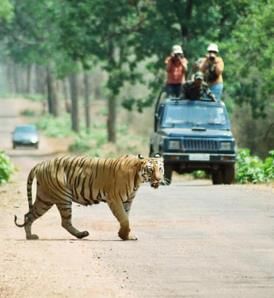 Why in News?
Why in News?
Maharashtra's Tadoba-Andhari Tiger Reserve has implemented several new reforms aimed at enhancing the tourist experience, including a fast-track safari entry system, more lenient rules for late-night arrivals, and improved options for full-day safaris.
- Location: Situated in the Chandrapur district, it is the largest and oldest tiger reserve in Maharashtra.
- Name Origin: The name "Tadoba" is derived from the local god "Tadoba" worshipped by indigenous tribes, while "Andhari" refers to the Andhari River flowing through the reserve.
- Area: The reserve spans a total area of 625.4 sq. km, which includes Tadoba National Park (116.55 sq. km) and Andhari Wildlife Sanctuary (508.85 sq. km).
- Corridor Linkages: It connects with Nagzira-Navegaon and Pench Tiger Reserves within Maharashtra.
Additional Details
- Habitat: The reserve is located in the Central Plateau province of the Deccan Peninsula, characterized by undulating terrain and rich biodiversity.
- Vegetation: The predominant vegetation is Southern Tropical Dry Deciduous, featuring thick forests with teak trees, and other species like crocodile bark, salai, tendu, karaya gum, and mahua madhuca.
- Water Bodies: The area includes two lakes, Tadoba Lake and Kolsa Lake, along with the Tadoba River.
- Fauna: The reserve is home to significant wildlife, including tigers, leopards, sloth bears, wild dogs, gaurs, chitals, and sambars. It hosts around 280 bird species, along with 54 species of reptiles, 11 species of amphibians, and 84 species of fish.
The Tadoba-Andhari Tiger Reserve continues to be a vital ecological area, offering crucial habitat for numerous species and providing enhanced experiences for its visitors through recent reforms.
GS2/Governance
Fixing India’s Highway Black Spots: Panel Calls for Urgent Action
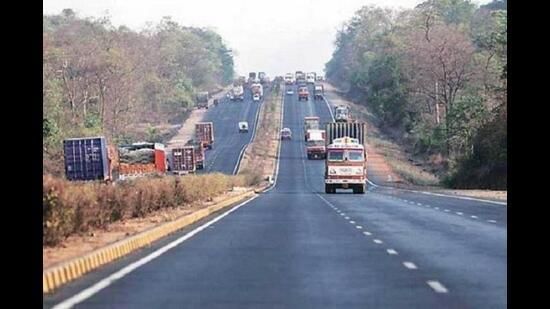 Why in News?
Why in News?
The Parliamentary Standing Committee on Transport, Tourism and Culture has criticized the Ministry of Road Transport and Highways (MoRTH) for the ongoing presence of accident-prone “black spots” on national highways (NHs). This issue highlights the urgent need for action to enhance road safety in India.
- India has a high number of road accidents, primarily occurring at "black spots".
- The parliamentary panel has identified significant governance failures in addressing these dangerous locations.
- A three-tier action plan has been proposed to prioritize the rectification of black spots.
Additional Details
- Black Spots: These are specific locations on national highways where a high frequency of severe accidents has been recorded over three consecutive years. Factors contributing to black spots include poor road design, inadequate signage, lack of lighting, sharp curves, and congested junctions.
- The parliamentary panel categorized black spots into three tiers based on severity, complexity of fixes required, and population exposure, with strict timelines for rectification.
- MoRTH aims to reduce road fatalities by 95% by 2028, with specific targets for fixing 1,000 black spots in FY 2025-26 and eliminating all by FY 2027-28.
- Follow-up safety audits are recommended at 3-month and 12-month intervals post-rectification to ensure the effectiveness of interventions.
In conclusion, addressing the issue of black spots on national highways is critical for saving lives. The current pace of remedial work does not align with MoRTH's ambitious goals. The recommendations put forth by the parliamentary panel outline a clear path towards improving road safety through urgent action, accountability, and transparency.
GS3/Economy
10 Years of Sagarmala Project
 Why in News?
Why in News?
The Sagarmala Programme, initiated in 2015 by the Ministry of Ports, Shipping, and Waterways (MoPSW), has recently celebrated its 10th anniversary, marking a decade of transformative success that has positioned India as a significant maritime powerhouse.
- The Sagarmala Programme aims to enhance India's maritime sector by promoting port-led development.
- This initiative is a crucial aspect of the Maritime Amrit Kaal Vision 2047, focused on making India a global maritime leader by 2047.
Additional Details
- Five Key Components:
- Port Modernization & New Port Development: Upgrading ports to augment efficiency and capacity.
- Port Connectivity Enhancement: Improving multimodal logistics and connectivity to port hinterlands.
- Port-Led Industrialization: Establishing industrial clusters near ports to stimulate economic growth.
- Coastal Community Development: Fostering skill development and livelihood opportunities for coastal communities.
- Coastal Shipping & Inland Waterways Transport: Promoting eco-friendly shipping solutions and inland waterways to alleviate congestion.
- Implementation & Funding: The program is managed by major ports, central ministries, state governments, and various agencies, primarily funded through Public-Private Partnerships (PPP), IEBR, Grant-in-Aid, and Equity through the Sagarmala Development Company Limited.
- Maritime Amrit Kaal Vision 2047 (MAKV): Targets include achieving 4 million GRT of shipbuilding capacity and handling 10 billion metric tons of port cargo annually, aspiring to be among the top five shipbuilding nations by 2047.
- Progress Till Date:
- 839 projects identified with a total investment of ₹5.79 lakh crore.
- 272 projects completed with an investment of ₹1.41 lakh crore.
- 118% growth in coastal shipping over the last decade, reducing logistics costs and emissions.
- 700% increase in inland waterway cargo, easing road and rail congestion.
- Over 40 lakh passengers transported via Ro-Pax ferries.
- Nine Indian ports ranked among the top 100 globally.
- Sagarmala 2.0: This phase focuses on shipbuilding, repair, recycling, and modernization with a budget of ₹40,000 crore.
- Sagarmala Startup Innovation Initiative (S2I2): Launched in March 2025 to support startups in green shipping and sustainable development.
In summary, the Sagarmala Programme represents a pivotal step towards enhancing India's maritime capabilities and economic growth, addressing both infrastructure needs and community development along the coast.
UPSC 2019 Question:
With reference to India’s projects on connectivity, consider the following statements:
- 1. East-West Corridor under the Golden Quadrilateral Project connects Dibrugarh and Surat.
- 2. Trilateral Highway connects Moreh in Manipur and Chiang Mai in Thailand via Myanmar.
- 3. Bangladesh-China-India-Myanmar Economic Corridor connects Varanasi in Uttar Pradesh with Kunming in China.
How many of the above statements are correct?
- (a) Only one
- (b) Only two
- (c) All three
- (d) None
GS2/International Relations
Advantage China in Africa’s Nuclear Energy Market Race
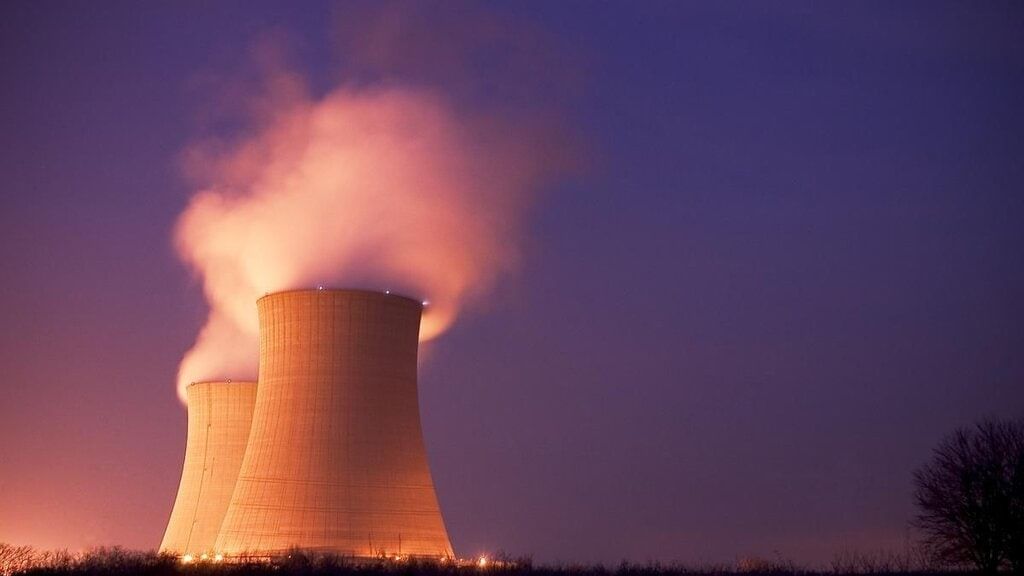 Why in News?
Why in News?
The global energy landscape has transformed significantly following the Russia-Ukraine war. African nations, in their pursuit to diversify energy sources, are increasingly considering nuclear power as a vital part of their energy transition. This shift has drawn the attention of global powers eager to stake a claim in Africa’s nuclear market, with China emerging as a dominant player, challenging traditional Western influence and raising geopolitical concerns.
- Africa currently has only one operational nuclear power plant, the Koeberg Nuclear Power Station in South Africa.
- Countries like Ghana, Nigeria, and Kenya are planning to incorporate nuclear energy into their power grids.
- Projections indicate that Africa could generate up to 15,000 MW of nuclear energy by 2035, representing a $105 billion investment opportunity.
Additional Details
- Africa's Nuclear Energy Aspirations: The continent's potential for nuclear energy can address chronic electricity shortages and unreliable power supply.
- The Scramble for Africa’s Nuclear Market: Historically, France has dominated this market, but nations like the U.S. and Russia are also seeking partnerships. Russia's economic sanctions may hinder its investment capabilities.
- China's Dominance: China is rapidly expanding its nuclear presence, having launched educational initiatives to familiarize African nations with its nuclear technologies. It operates over 50 nuclear reactors globally.
- Growing MoUs: China has signed multiple memorandums of understanding (MoUs) with African nations for nuclear power plant development; for instance, Nigeria and Uganda have entered agreements with China.
- Impact on India’s Energy Security: As India aims to expand its nuclear capacity, China's influence in Africa may restrict India's access to vital uranium supplies.
The shift towards nuclear energy in Africa offers both opportunities and challenges. While it can provide a reliable electricity source, it also turns the nuclear sector into a battleground for global influence, with China positioning itself as the leading force, raising concerns about economic dependencies for African nations.
GS2/International Relations
Scarborough Shoal: Recent Developments
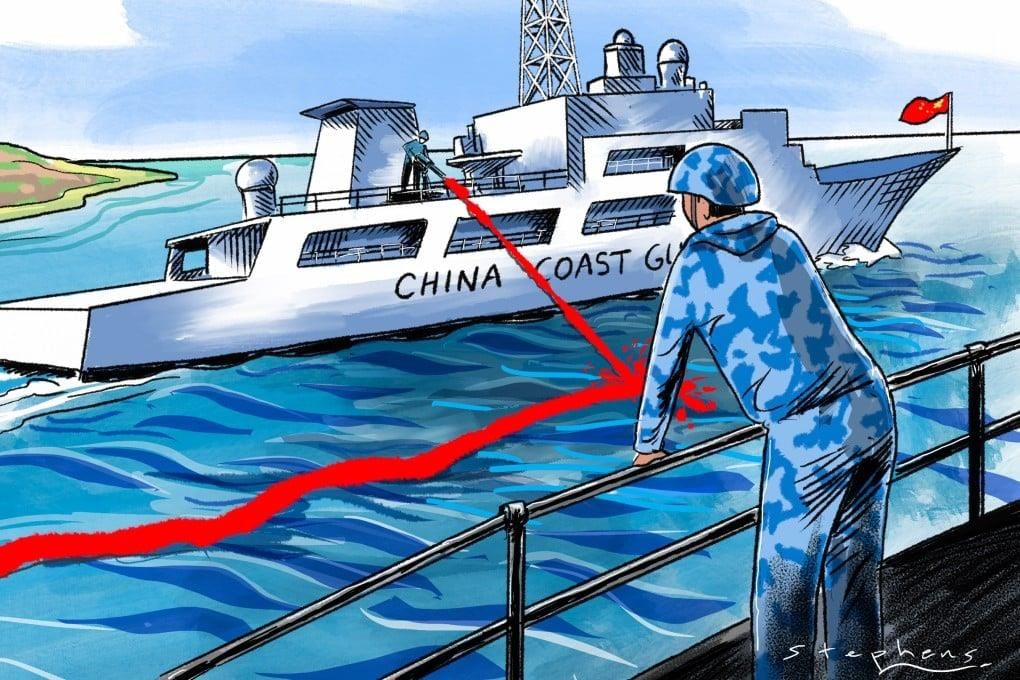 Why in News?
Why in News?
Recently, China has deployed two long-range H-6 bombers around the Scarborough Shoal, marking another step in Beijing's efforts to assert its sovereignty over this contested atoll in the South China Sea.
- The Scarborough Shoal is a coral atoll located approximately 220 kilometers west of the Philippines’ Island of Luzon.
- It is the largest atoll in the South China Sea, primarily submerged at high tide.
- There is an ongoing territorial dispute over the shoal between the People’s Republic of China and the Philippines.
Additional Details
- Geographical Significance: The Scarborough Shoal extends 18 km in a northwest-southeast direction and 10 km in a northeast-southwest direction, making it a strategic location for fishing and marine biodiversity.
- The area is rich in marine life, including commercially valuable shellfish and sea cucumbers, contributing to its importance for local economies.
- Claims of Sovereignty: China asserts historical claims dating back to the Yuan Dynasty, while the Philippines bases its claim on geographical proximity, being much closer to Luzon and within its 200-nautical mile exclusive economic zone according to the 1982 United Nations Convention on the Law of the Sea (UNCLOS).
- China has maintained a coast guard presence at the shoal since 2012, effectively controlling the area despite the lack of permanent structures.
The situation surrounding Scarborough Shoal remains unresolved, highlighting ongoing tensions in the South China Sea, which is critical for international shipping and regional security.
GS1/Geography
Teesta River and Its Significance
Why in News?
Recently, Bangladesh has welcomed Chinese involvement in the Teesta River Comprehensive Management and Restoration Project, highlighting the river's importance as a resource for both India and Bangladesh.
- The Teesta River is a major transboundary river flowing through India and Bangladesh.
- It serves as a vital water resource for both nations.
- The river originates from Tso Lhamo Lake in North Sikkim, India.
- It spans approximately 414 kilometers, with a drainage basin covering about 12,540 square kilometers.
Additional Details
- Geographical Significance: The Teesta River plays a crucial role in the hydrology of the region, particularly for irrigation and hydroelectric projects.
- Origin: The river begins at an elevation of around 5,280 meters from Tso Lhamo Lake, with other sources from Pahunri Glacier, Khangse Glacier, and Chho Lhamo Lake.
- Course: Flowing southward through the Sikkim Himalayas, the Teesta passes through towns like Rangpo, continues through West Bengal, and ultimately joins the Brahmaputra River (known as the Jamuna River in Bangladesh).
- Length and Basin Area: The river's total length is approximately 414 kilometers, with a drainage basin where 83% lies in India and 17% in Bangladesh.
- Tributaries: Key left-bank tributaries include Lachung Chhu, Chakung Chhu, and Rangpo Chhu; notable right-bank tributaries are Zemu Chhu and Rangit River.
- Hydroelectric Projects: In India, significant projects include the Teesta-V Dam (510 MW) and Teesta-III Dam (1,200 MW), while in Bangladesh, the Duani Barrage and Barakhata Teesta Barrage serve mainly irrigation purposes.
The Teesta River is not only essential for water management but also plays a pivotal role in the energy sector, making collaborations such as the one with China significant for both countries' development and sustainability efforts.
GS2/Polity
Norms Surrounding Disclosure of Judges’ Assets
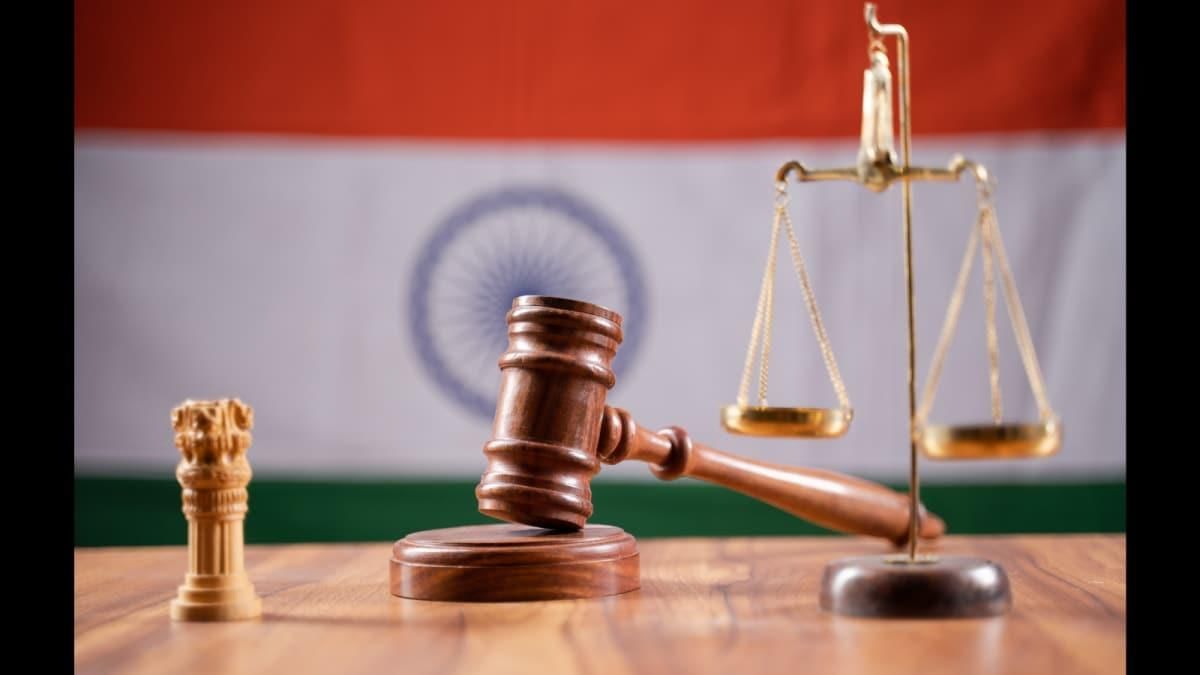 Why in News?
Why in News?
The recent discovery of substantial amounts of cash at the residence of Delhi High Court judge Justice Yashwant Varma has intensified concerns regarding corruption within India’s higher judiciary. This incident has further fueled demands for the public disclosure of judges’ assets and liabilities, which, unlike other public servants, judges are not required to disclose, and many have not done so.
- The Supreme Court's stance on judges' asset disclosure.
- The status of asset disclosure norms in High Courts.
- Comparison with other public servants regarding asset disclosure.
- Historical resolutions and their implications.
Additional Details
- 1997 Resolution: Under then Chief Justice J S Verma, the Supreme Court adopted a resolution requiring judges to declare their assets, including those of their spouses and dependents, to the Chief Justice. However, this resolution did not mandate public disclosure.
- 2009 Resolution: In September 2009, the Supreme Court full bench decided that judges' asset declarations would be published on its website, but only on a voluntary basis. This led to some High Courts following suit.
- Lack of Updates Since 2018: The Supreme Court website has not been updated since 2018, only listing judges who submitted declarations without publishing the disclosures.
- 2019 RTI Case and SC Ruling: In 2019, the Supreme Court ruled that judges' assets and liabilities do not qualify as “personal information,” stemming from an RTI request made in 2009.
- Low Compliance with Public Disclosure: As of March 1, 2024, only 97 out of 770 High Court judges (less than 13%) have publicly declared their assets, primarily from seven High Courts.
- Resistance from High Courts: Several High Courts, including Uttarakhand and Allahabad, have objected to judges' asset disclosures, citing them as outside the scope of the RTI Act.
- Parliamentary Committee’s Recommendation: In 2023, a committee recommended a law to mandate the disclosure of judges’ assets, but no legislative action has been taken yet.
- Mandatory Asset Declarations for Public Servants: In contrast to judges, most public servants are required to declare their assets, often publicly accessible, ensuring accountability.
- RTI’s Role in Public Disclosure: The RTI Act mandates annual asset declarations by government officials, with many states enforcing strict provisions for public access.
- Asset Disclosure for Election Candidates: Since a 2002 Supreme Court ruling, candidates for elections must declare their assets, with detailed requirements to ensure transparency.
In conclusion, the current climate surrounding the disclosure of judges’ assets is marked by significant resistance and a lack of transparency compared to other public positions. The calls for reform continue as incidents of alleged corruption raise critical questions about accountability in the judiciary.
GS3/Defence & Security
Perm Submarine
Why in News?
The recent launch of the Perm submarine by Russian President Vladimir Putin highlights significant advancements in Russia's naval capabilities, particularly in the realm of nuclear-powered submarines.
- The Perm is a fourth-generation nuclear-powered attack submarine belonging to the Yasen-M class (Project 885M).
- It is the first Russian nuclear submarine to be equipped with the 3M22 Zircon hypersonic cruise missile as a standard feature.
- Scheduled to enter service with the Russian Navy in 2026.
Additional Details
- Power Source: The submarine is powered by a pressurized water-cooled nuclear reactor that generates 200 megawatts (approximately 268,204 horsepower).
- Speed and Maneuverability: The Perm can reach speeds of up to 31 knots when submerged and 16 knots on the surface.
- Core Life: With a core life of 25–30 years, the Perm eliminates the need for mid-life refueling, contributing to lower acoustic signatures due to natural coolant circulation.
- Diving Capabilities: It has a maximum diving depth of 600 meters and can operate at depths of up to 520 meters, allowing it to remain submerged for up to 100 days.
- Dimensions: The overall length of the submarine is 130 meters, with a beam of 13 meters and a draft of 9.4 meters, accommodating a crew of 64 members.
The Perm submarine represents a significant step forward in military technology for Russia, particularly with its advanced features and capabilities designed for modern naval warfare.
GS2/International Relations
India’s Geopolitical Vision Should be Larger
Why in News?
India has historically played a significant role on the global stage, balancing its economic growth with diplomatic relations. However, recent geopolitical developments have raised concerns regarding India's limited engagement in international conflict resolution. This has led to discussions on whether India should take a more proactive stance in global geopolitics.
- India's historical interventions in regional crises highlight its potential as a major global player.
- India's current cautious diplomatic posture raises questions about its long-term aspirations in global governance.
- Emerging middle powers are filling the diplomatic void left by India, thereby increasing their geopolitical influence.
Additional Details
- India's Historical Influence: India was a leader in the Non-Aligned Movement (NAM), demonstrating its commitment to shaping global politics. However, its current strategy emphasizes bilateral relations over collective action.
- Global Leadership Expectations: As the world's fifth-largest economy and a candidate for a permanent seat at the United Nations Security Council (UNSC), India is expected to play a more active role in global affairs.
- The Risks of Inaction: If India does not engage more actively, it risks losing credibility among its allies and might be overshadowed by emerging powers like Türkiye and Qatar, which have taken on significant mediation roles in international conflicts.
- China's Influence: China's growing presence through initiatives like the Belt and Road Initiative (BRI) poses challenges for India. A passive approach limits India's ability to counterbalance this influence effectively.
- Playing a Proactive Role: India should be prepared to facilitate dialogue and negotiations in global conflicts, leveraging its historical diplomatic experience to engage more actively in conflict resolution.
To solidify its position as a global power, India must transcend its economic ambitions and engage strategically in geopolitical affairs. By actively participating in shaping global events, India can enhance its influence and establish itself as a key player in a multipolar world, where leadership will increasingly be defined by the ability to foster stability and cooperation.
GS2/International Relations
BIMSTEC Summit 2025 in Bangkok
Why in News?
The Indian Prime Minister is set to visit Bangkok, Thailand, from April 3-4, 2025, to attend the 6th BIMSTEC Summit. During this visit, discussions will be held with the Prime Minister of Thailand to enhance bilateral ties and regional cooperation.
- BIMSTEC connects South Asia and Southeast Asia.
- Established in 1997 through the Bangkok Declaration.
- Member countries include Bangladesh, Bhutan, India, Nepal, Sri Lanka, Myanmar, and Thailand.
Additional Details
- BIMSTEC: The Bay of Bengal Initiative for Multi-Sectoral Technical and Economic Cooperation aims to promote economic and social development among its member countries.
- Evolution: Initially called 'BIST-EC' (Bangladesh, India, Sri Lanka, and Thailand Economic Cooperation), it was renamed 'BIMST-EC' when Myanmar joined in 1997. The current name was adopted in 2004 when Nepal and Bhutan became members.
- Key Features: BIMSTEC serves as a bridge between South and Southeast Asia, focusing on economic growth, trade, technology, energy, security, and connectivity. It acts as an alternative to SAARC for regional cooperation.
- India's Role: India plays a leading role in BIMSTEC initiatives related to trade, security, maritime cooperation, and climate action, advocating for the BIMSTEC Free Trade Agreement to boost regional trade integration.
- Strategic Vision: India’s 'Neighbourhood First Policy' emphasizes strengthening economic and security ties with South Asian neighbors, while the 'Act East Policy' aims to enhance engagements with ASEAN and Southeast Asia. The 'MAHASAGAR Vision' focuses on bolstering India's role in global maritime security and economic growth.
This visit underscores India's commitment to its 'Neighbourhood First' and 'Act East' policies, as well as its vision for mutual and holistic advancement for security and growth across regions.
|
44 videos|5362 docs|1133 tests
|
FAQs on UPSC Daily Current Affairs: 29th March 2025 - Current Affairs & Hindu Analysis: Daily, Weekly & Monthly
| 1. What are the main causes of India's cotton crisis? |  |
| 2. How does the Tadoba-Andhari Tiger Reserve contribute to wildlife conservation in India? |  |
| 3. What are the key findings of the panel regarding India's highway black spots? |  |
| 4. What has been the impact of the Sagarmala Project over the past 10 years? |  |
| 5. Why is the Scarborough Shoal significant in the context of South China Sea disputes? |  |
















